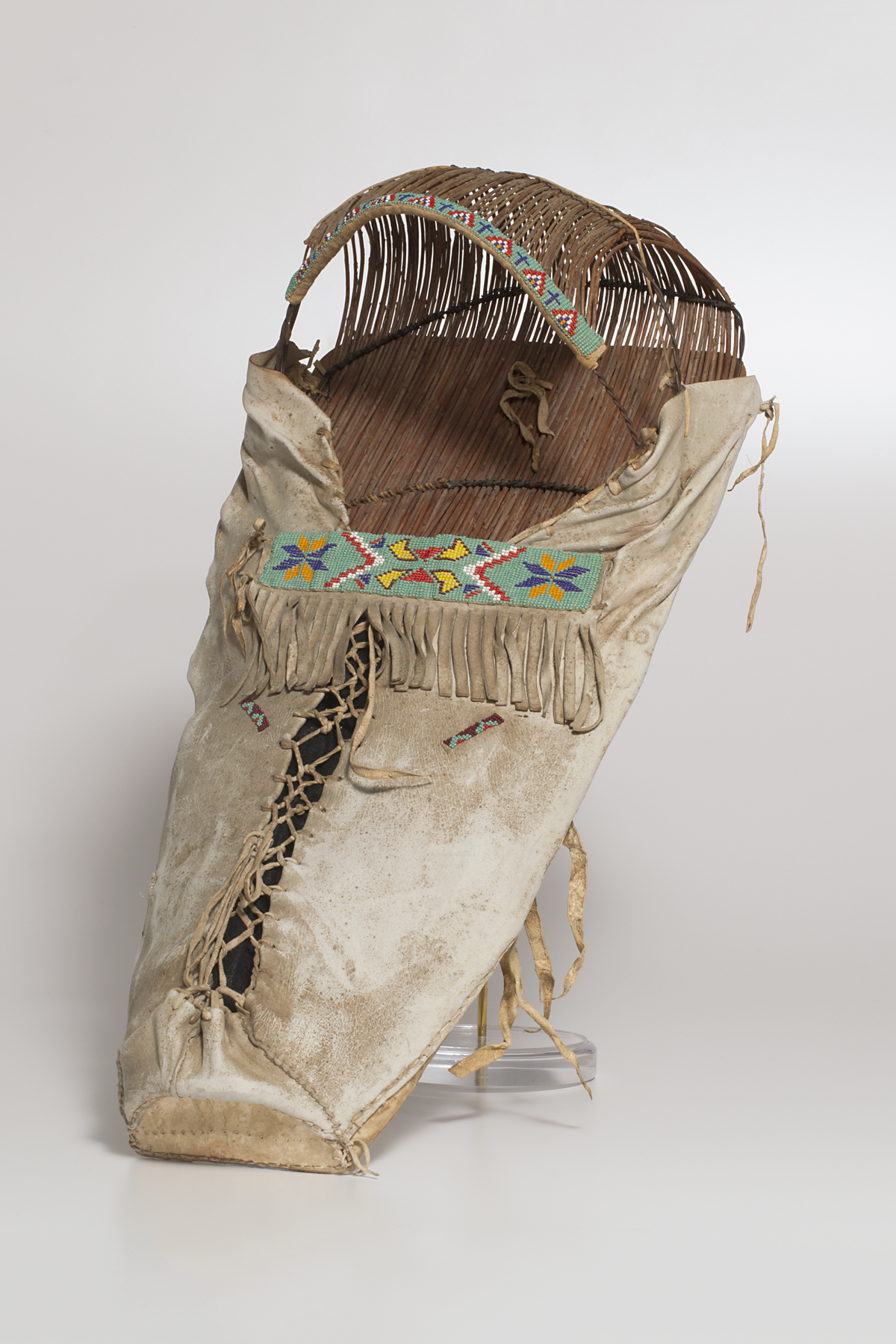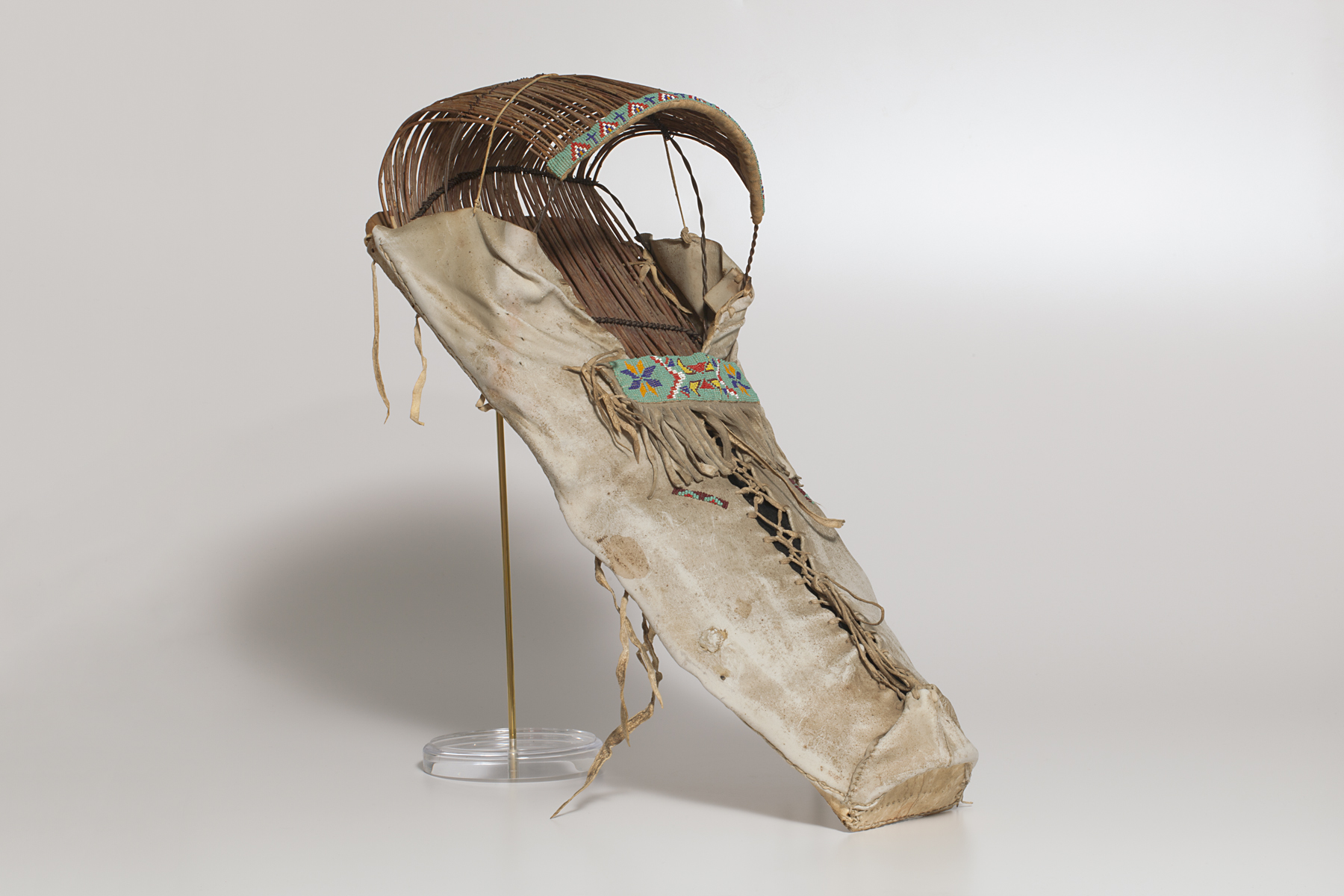poqx'a g'ono (cradleboard), unrecorded Ute artist
Artwork Overview
unrecorded Ute artist, artist
poqx'a g'ono (cradleboard),
early 1900s
Where object was made: FOUR CORNERS AREA, United States
Material/technique: rawhide; grey willow; wood; beading; wire; buckskin; cloth
Dimensions:
Object Height/Width/Depth (Height x Width x Depth): approximately 69 x 35 x 24 cm
Object Height/Width/Depth (Height x Width x Depth): 27 3/16 x 13 3/4 x 9 7/16 in
Object Height/Width/Depth (Height x Width x Depth): approximately 69 x 35 x 24 cm
Object Height/Width/Depth (Height x Width x Depth): 27 3/16 x 13 3/4 x 9 7/16 in
Credit line: Gift of Orvel A. Criqui
Accession number: 2007.2320
Not on display
If you wish to reproduce this image, please submit an image request

